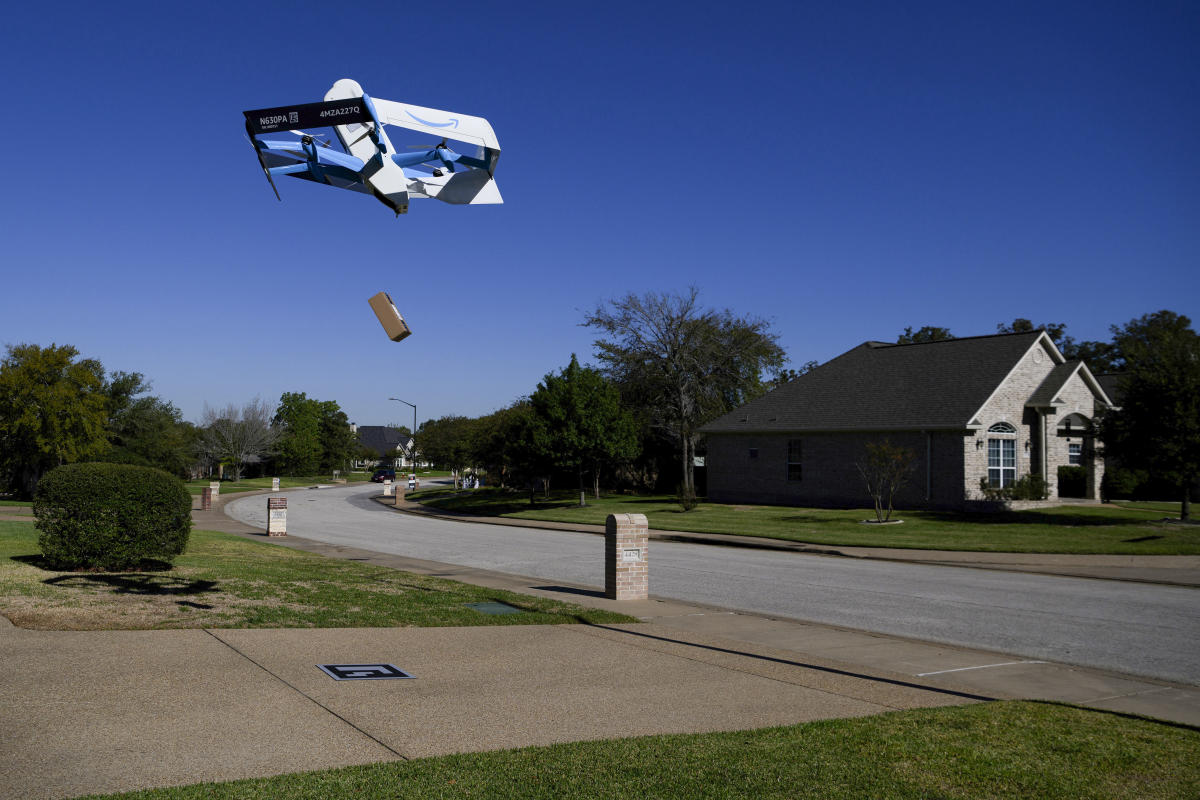Only one item can be delivered at a time. It can’t weigh more than 5 pounds. It can’t be too big. It can’t be something breakable, since the drone drops it from 12 feet. The drones can’t fly when it is too hot or too windy or too rainy.
You need to be home to put out the landing target and to make sure that a porch pirate doesn’t make off with your item or that it doesn’t roll into the street (which happened once to Lord and Silverman). But your car can’t be in the driveway. Letting the drone land in the backyard would avoid some of these problems, but not if there are trees.
Amazon has also warned customers that drone delivery is unavailable during periods of high demand for drone delivery.



I can’t imagine an “open to the general public” flying car system that didn’t involve huge amounts of automation, basically self-flying planes. A modern jet liner is effectively self-flying already. And, even though the pilots are rarely required to take direct control over the jets the alcohol limit is 0% and they’re not even allowed to drink within 8 hours of a flight. So, to have a scenario with “drunk flyers in bad weather” you’d need a system with looser rules than current aviation, and less automation that current aviation.
No, but there are parachutes.
Besides, most fiction involving flying cars also involves automated flying cars. Sure, often the “hero” takes direct control of the car and does some crazy maneuvers with it, but in the futures where flying cars exist, autopilots are extremely advanced, and most commuters just hit the button and relax. In addition, if an autopilot did exist, it could become “driver assist” if the human decides to take “direct control”. So, even in a future with frustrated aerial commuters who get “sky rage” and decide to take over flying from the autopilot, a “pilot assist” program could still interpret what they want and limit the danger they pose to themselves or other craft.
The F-16 is almost 50 years old now, and for those 50 years it has been impossible for pilots to fly it with “assists off”. The plane was designed from the start to be dynamically unstable. A pilot simply couldn’t control it without computer assistance. The pilot uses a fly-by-wire system where their inputs are interpreted by computers that do the right thing while still maintaining stability and so-on. A future flying car would pretty obviously be designed the same way.
Yeah, as I was writing that, I was thinking about '80s flying car lanes. It’s like a flow of cars with constant speed. But the ‘drunk flyers’ bit meant that we are humans. You’re also not allowed to drive drunk on the roads. That doesn’t prevent people from still doing that.
Good that you’ve mentioned the F-16, I’m just watching a video on them by Real Engineering on YouTube. I can only recommend the channel, and I’m not even an engineering nerd. Well, not yet.
EDIT: Yeah, a few more minutes into the video I think we both watched the same : ).
I haven’t watched a video on the F-16 for ages. I am just an aviation fan and have heard many stories of the F-16 over the years.
I don’t know if it’s mentioned in that video, but the early days of the F-16 were really interesting. It was the first ever fly-by-wire fighter, so there were lots of design issues to work out. The very first versions of the F-16 (maybe still the YF-16 at that stage) used a side-stick that didn’t move at all, it was designed to be pressure-sensitive so pilots could pull lightly to put a little bit of elevator pressure on, or pull hard to go to the elevators’ max deflection. The problem was that pilots never knew when they had reached the limits, so they pushed as hard as they could on the stick. Observers said that you could actually see a twitch in the control surfaces when pilots were at the max, and the twitch was due to being able to see the pulse of the pilot.
After a short time, General Dynamics switched to a side stick that had some range of motion, so that pilots knew when they were at the limits of the controls and didn’t keep pushing.
Yeah, they mentioned it in the video. That whole plane is just an awesome thing. It’s crazy how many modern sounding features they could shove into it so long ago.
As for the stick, AFAIK the pilots couldn’t tell the difference between moving it with 40% or 60% of the force needed, and the feedback loop was delayed.
I guess it’s just the timing then, because these were the main points of the video too.
Here is an alternative Piped link(s):
video
Piped is a privacy-respecting open-source alternative frontend to YouTube.
I’m open-source; check me out at GitHub.